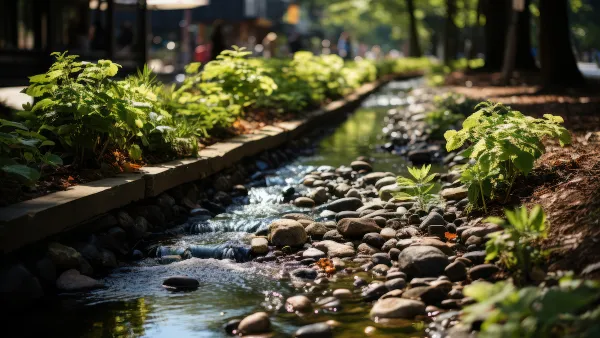A Rutgers professor restores natural processes to help shorelines adapt to rising sea levels.
In The Harvard Gazette, Alvin Powell reports on the work of Professor Steven Handel, who is using green infrastructure to combat the phenomenon known as "coastal squeeze."
Coastal squeeze occurs in habitats that exist between a naturally migrating shoreline and a man-made immoveable barrier, like a road.
Or as Powell writes, "what people may view as scenic coastal roadways, the natural communities of plants and animals may experience as terminal barriers, blocking their migratory response to rising seas."
Handel is a Rutgers professor visiting who worked on the development of the Fresh Kills landfill site on Staten Island; his approach is not unlike what the Dutch have been doing for many years, or what is now being done in coastal cities like San Francisco.
"The approach Handel described begins with accepting that the seas will rise. It takes projections for how sea levels will change familiar landscapes and moves forward from there, looking for opportunities such as inland water bodies and waterways that may soon be brackish, making them potential sites for future salt marshes. Newly engineered marshes can replace those drowned by the rising tide, buffer storms, and provide breeding grounds for fish and birds. Other opportunities lie in brownfields and abandoned sites that could be rehabilitated into places where communities meet the sea and around which fresh development can grow."
In cities across the United States, green infrastructure is an increasingly popular tool to mitigate the effects of climate change, especially in the wake of natural disasters.
FULL STORY: Transforming the ‘coastal squeeze’ from climate change

National Parks Layoffs Will Cause Communities to Lose Billions
Thousands of essential park workers were laid off this week, just before the busy spring break season.

Retro-silient?: America’s First “Eco-burb,” The Woodlands Turns 50
A master-planned community north of Houston offers lessons on green infrastructure and resilient design, but falls short of its founder’s lofty affordability and walkability goals.

Delivering for America Plan Will Downgrade Mail Service in at Least 49.5 Percent of Zip Codes
Republican and Democrat lawmakers criticize the plan for its disproportionate negative impact on rural communities.

Test News Post 1
This is a summary

Test News Headline 46
Test for the image on the front page.

Balancing Bombs and Butterflies: How the National Guard Protects a Rare Species
The National Guard at Fort Indiantown Gap uses GIS technology and land management strategies to balance military training with conservation efforts, ensuring the survival of the rare eastern regal fritillary butterfly.
Urban Design for Planners 1: Software Tools
This six-course series explores essential urban design concepts using open source software and equips planners with the tools they need to participate fully in the urban design process.
Planning for Universal Design
Learn the tools for implementing Universal Design in planning regulations.
EMC Planning Group, Inc.
Planetizen
Planetizen
Mpact (formerly Rail~Volution)
Great Falls Development Authority, Inc.
HUDs Office of Policy Development and Research
NYU Wagner Graduate School of Public Service





























